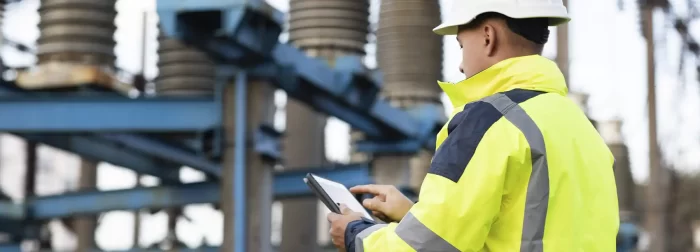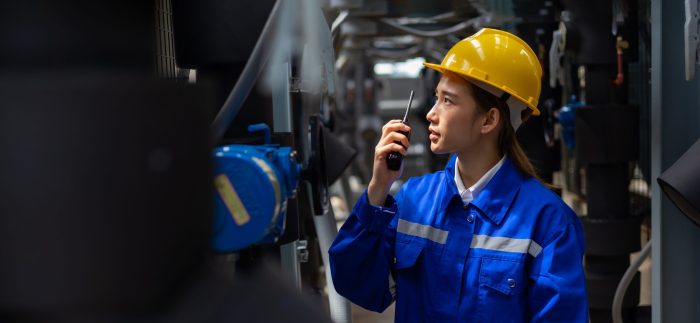Insights
Enhancing Safety in Emergency Response with Body Worn Cameras
24 January 2024Traditionally used by law enforcement and security personnel, body-worn cameras (BWCs) are evolving from being a tool primarily used for policing and evidence collection, to becoming crucial assets for safeguarding personnel across a range of industries.
In policing, BWCs play a critical role in protecting officers and those they interact with. By capturing events as they happen on the ground, these devices can help to resolve disputes and maintain trust in the police service.
BWCs are now making their way into other industries, thanks to their versatility and ability to document and enhance safety. For example, in retail and hospitality environments, they offer an added layer of protection for staff members and help de-escalate confrontational situations. Major Australian retailers have adopted BWCs to keep their staff safe in the face of rising incidences of abuse and assault against workers.
In recent times, BWCs have also found their way into the healthcare and emergency services sectors, taking safety and accountability to the next level.
Body Worn Cameras Providing Enhanced Protection for Emergency Services Personnel
With the rising number of attacks on paramedics, healthcare and emergency service workers, organisations are looking to new initiatives to safeguard their personnel.
For paramedics, BWCs are becoming a valuable tool to enhance their safety, with the ability to deter aggressive or unruly behaviour from patients and even bystanders. The presence of a visible camera often prompts individuals to moderate their behaviour, reducing the likelihood of confrontations or hostile actions toward paramedics. This preventive effect not only safeguards the well-being of the medical personnel but also contributes to maintaining a calmer, more controlled environment during emergency responses.
BWCs can also play a role in ensuring transparency and accountability. By capturing real-time footage of incidents, these cameras provide an unbiased and factual record of interactions between paramedics and patients. In instances where disputes or allegations arise, this objective account of events becomes invaluable, serving as evidence to clarify what transpired. This not only shields paramedics from false accusations but also fosters trust between emergency responders and the community.
Improving Worker Safety in Hospitals
BWCs hold immense potential within medical and healthcare environments. Within hospitals – particularly in high-stress areas like emergency departments – the utilisation of BWCs among healthcare staff can significantly enhance security measures.
BWCs in emergency departments can serve as a proactive measure to safeguard medical personnel from potential threats or hostile behaviour. In situations where patients or visitors exhibit aggressive behaviour or become confrontational, the presence of BWCs can act as a deterrent, potentially de-escalating volatile situations.
BWCs allow for live-streaming video and audio back to a control centre, with the wearer able to activate a one-touch emergency button to call for assistance if necessary. Not only is this a simple action for the wearer to take when alerting of a situation, once completed, they are also able to immediately return focus to the task at hand, instilling confidence that responders have eyes up and hands free to do what is required of them.
Certain models can be integrated with two-way radio devices for rapid response – the Motorola VB400 body-worn camera can trigger immediate recording when a paired MOTOTRBO or P25 radio enters an emergency state. BWCs can also be integrated easily with existing CCTV and video management systems, ensuring a robust, inter-connected and highly responsive security ecosystem.
Beyond safety, BWCs can also play a role in healthcare settings by facilitating educational opportunities. The real-life scenarios captured by these devices can serve as an effective training tool, offering personnel invaluable insights into how to manage a diverse range of situations. This proactive approach can aid in identifying areas for improvement, enhancing the skills of healthcare workers and ultimately leading to better care provision.
In situations of in-home care, or where a healthcare provider is required to visit residences, BWC’s can offer a heightened level of confidence in personnel safety and accountability.
The Future: Integrating Advanced Technology for Enhanced Capabilities
The future of BWCs promises to expand their capabilities even further through the integration of advanced technologies, integration with existing systems and automation of workflows for a seamless user experience.
One exciting development is the use of AI and machine learning video analytics. This could allow for real-time object detection, enabling the swift identification of items of concern such as weapons or suspicious objects, ensuring a heightened level of security. It can also help discern patterns of human behaviour, including signs of aggression, distress or unusual movements. When integrated with BWCs, this technology can immediately alert the wearer or a central monitoring system to potential threats, allowing for swift and precise responses.
As technology continues to advance, BWCs will play an even more significant role in creating safer workplaces. Their ability to seamlessly integrate into everyday workflows will make them invaluable assets for enhancing safety, transparency and accountability across a host of industries.
Industry Leading Body Worn Camera Solutions From CSE Crosscom
As a platinum partner of Motorola Solutions, CSE Crosscom provides video security and safety solutions with the latest range of innovative body worn cameras from a global leader in visual and communication technologies.
Contact our team to find out how we can tailor a security solution to meet your needs.

